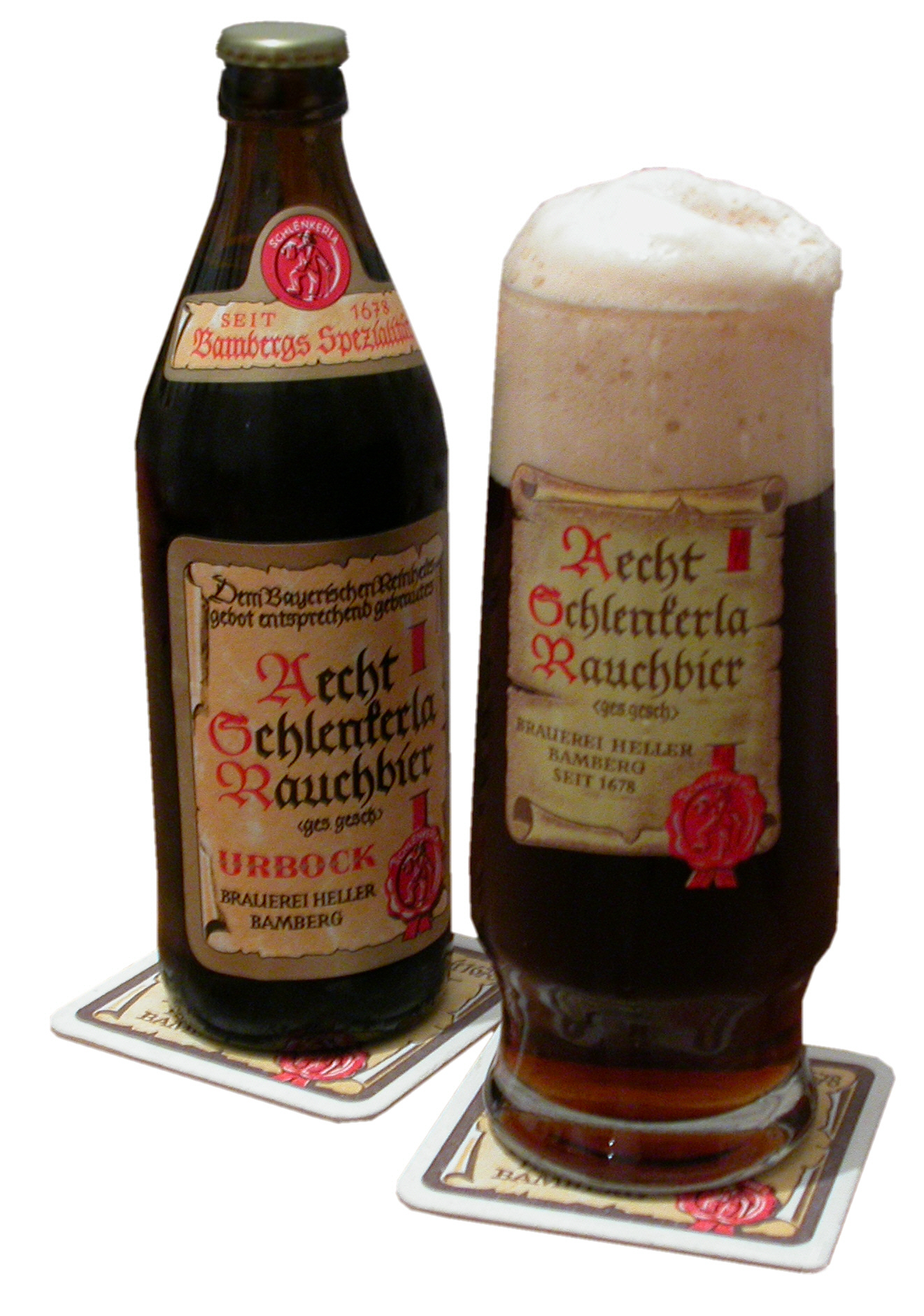Smoke and Beer–Part Two

By Ezra Johnson-Greenough and Jimmy Blum
Photo by Ritch Marvin
The fate of smoked beer in Germany largely followed the British path; however, a few small differences did allow the perpetuation of a smoked beer brewing culture. Germany eventually had access to much of the technology that had led to the decline of smoked beer in Britain. Although these innovations reached Germany later, many Germans had already adopted the process of air kilning, a method of drying malt by indirect heat. This allowed Germans to create smoke-free malts while still using smoke-producing fuel. Herein, the decline of smoked malt production in Germany had its own launching point. But, the divergence of brewing and malting industries did not occur in Germany to the degree it had in Britain. So, many German brewers continued to malt their own barley in-house into the 19th century. Although a malting industry would eventually arise in Germany, small breweries had the opportunity to continue to produce specialty malts. [v] Perhaps, it was this factor that ensured the continuation and eventual specialization of smoke beer production in Germany. Today, the city of Bamburg is the historical home of smoked beer, where specific brewers have continuously made smoked beers since the 16th century.
Despite this tumultuous history, smoked beers survive today. Although smoked beer is now a true specialty, it survives, in part, because it is so unique. The flavor that smoke imparts to malt, and eventually beer, relies upon many factors: fuel source, fire type, period of smoking, etc. And, herein lies the potential for complexity and novelty that drives drinkers of smoked beers to seek out pint after pint.
Ultimately, malt is the vehicle by which smoke reaches the finish beer. Proper production of these smoked malts, in addition to all of the other considerations that go into making quality beer, is paramount in creating smoked beer. In general, smoked malt has been dried over fires fueled by hardwoods such as beech, oak or alder. The particular fuel source is very important: it will lend the malt its specific calling card smoke flavor.
 In present-day Germany, two of the largest smoked beer producers, Spezial and Schlenkerla, produce their rauch (German for smoke) malt in-house. These brewers both employ beech in their smoking process. In order to control the wood’s smoke production and its contribution of flavor to the beer, both Spezial and Schlenkerla age (or season) their beech for over one year. [vi] The distinctive beech smoke flavor can be found in most of the Schlenkerla and Spezial beers that are exported to the United States, such as weizen, dunkel, Märzen and bock.
In present-day Germany, two of the largest smoked beer producers, Spezial and Schlenkerla, produce their rauch (German for smoke) malt in-house. These brewers both employ beech in their smoking process. In order to control the wood’s smoke production and its contribution of flavor to the beer, both Spezial and Schlenkerla age (or season) their beech for over one year. [vi] The distinctive beech smoke flavor can be found in most of the Schlenkerla and Spezial beers that are exported to the United States, such as weizen, dunkel, Märzen and bock.
The reach of Bamburg smoked malt extends across the Atlantic; many US brewers making smoked beers use Weyermann smoked malt, a beech-smoked product from Bamburg. [vii] Yet, unlike their German counterparts, US brewers infuse the beech smoke flavor into a wider range of styles, particularly stouts, porters and winter warmers.
There is one final variety of commercially available smoked malt that has broken into the world of craft beer: peat malt. Peat, a material harvested from bogs throughout Scotland and Ireland, consists of compacted plant matter that has formed into a dense flammable fuel source. Although malt dried over peat fires is primarily sold to Scotch whiskey distillers, a number of US brewers have infused their beer with this specialty malt. Unlike wood-smoked malts, brewers generally use peat malt with a very sparse hand; its flavor can become overwhelming if it is not used sparingly. [viii]
These varieties of smoked malt represent only a fraction of smoke’s permeation into the world of craft beer. Brewers are ceaselessly experimenting with both commercially available smoked malts as well as malts they smoke themselves over local and specialty fuel sources. What follows are highlights of some of the most intriguing smoked beers available. Each of these examples will more than reward the beer enthusiast who takes the time to seek them out.
Footnotes:
[v] Daniels, Ray and Larson, Geoffrey. Smoked Beers. Boulder, Colorado: Brewers Publications, 2000. Pp 59-64.
[vi] Smoked Beers. Pp 74-80.
[vii] Smoked Beers. Pp 80-81.
[viii] Smoked Beers. Pp 88-91.
